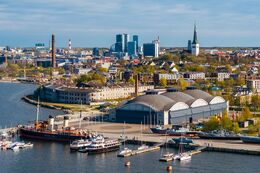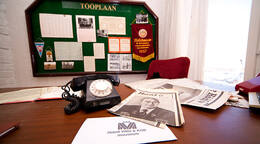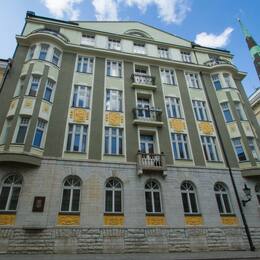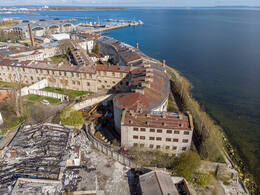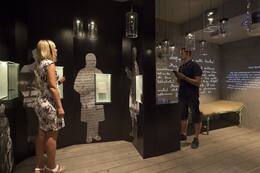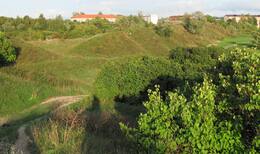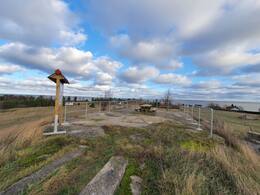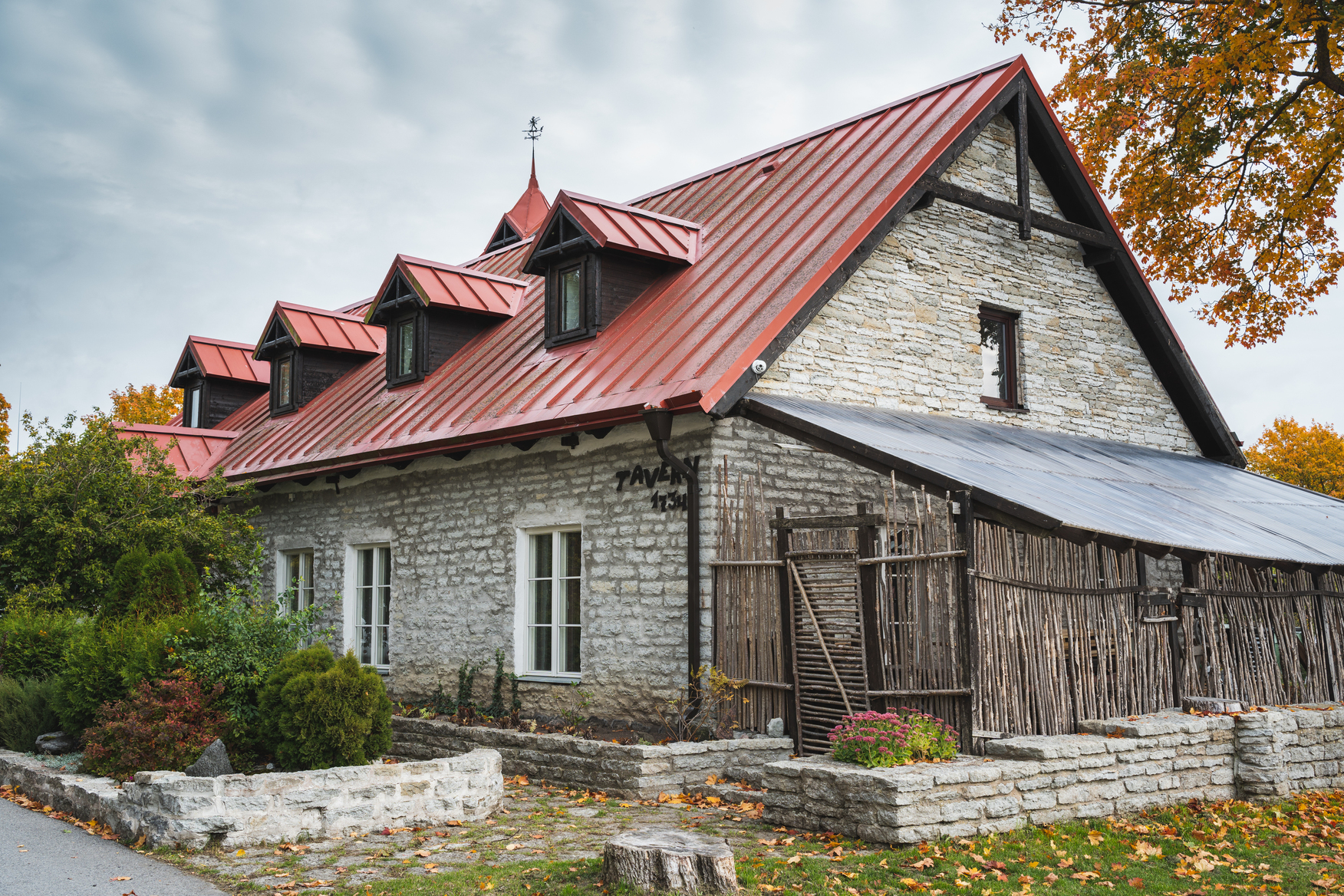Military heritage along the Iron Curtain Route by car from Tallinn to Liepāja
Day 1.
165 km
Tallinn–Paldiski–Spithami–Haapsalu
Practical info
- Driving distance: ~165 km
- On this day you need to choose which sights to visit, there is no time to visit all of them.
- Opening hours and ticket information for Estonian War Museum esm.ee. Guided tours for max. 10 persons in a group. Booking requests should be sent at least 3 workdays in advance.
- Opening hours and ticket information for Seaplane Harbour meremuuseum.ee. It is recommended to plan at least 2 hours for the visit. For guided tours the recommended group size is up to 15 persons. Guided tours should be booked in advance.
- Opening hours and ticket information for Viru Hotel KGB museum www.sokoshotels.fi. Group visits should be booked in advance.
- Opening hours and ticket information for the KGB Cells Museum vabamu.ee. Group visits should be booked in advance.
- Opening hours and ticket information for Patarei sea fortress museum patareiprison.org. Guided tours (1h 15 min) are available for groups of max. 20 persons in Estonian, Finnish, English and Russian. Visiting with a private guide is only possible by prior arrangement at least 3 working in advance.
- In the former closed military town of Paldiski guide services are recommended. Booking can be made via e-mail info@peetritoll.ee. More information at annelikana@gmail.com.
Sights
Estonian War Museum - General Laidoner Museum
This museum, which has been housed in the mid-19th century historicist Viimsi Manor since 2001, conducts research into and both preserves and displays Estonian military history. Its predecessors were the Estonian War of Liberation Museum (founded on 19 January 1919) and a museum dedicated to General Laidoner established at the manor by decree of Viimsi Municipal Government in 1993. During the Soviet occupation, the manor was used by a naval intelligence unit: after the withdrawal of the Soviet Army, the building was in a dire state. The museum was founded by decree of Minister of Defence Jüri Luik on 26 February 2001. Since then, the museum has operated under the jurisdiction of the Ministry of Defence. Its main exhibition showcases wars fought in Estonia and abroad in which Estonians have participated. Part of the exhibition is dedicated to Commander-in-Chief Johan Laidoner, who owned the manor from 1923-1940. The military equipment hangar near the main building displays a variety of artillery pieces and vehicles.
Seaplane Harbour
The Seaplane Harbour is situated on the water’s edge in the Kalamaja district of Tallinn.
It was commissioned during World War I by Russian Emperor Nicholas II as part of Peter the Great's Naval Fortress. The museum, based in the historic seaplane hangar, has around 200 original exhibits on display: the submarine Lembit, the 100-year-old icebreaker Suur Tõll, the seaplane Short 184, the oldest Estonian shipwreck, mines, cannons and more. Temporary exhibitions complement the main exhibition. The seaplane hangar is architecturally unique: its domed roof was one of the first thin concrete shell structures of its kind.
The museum’s programmes and materials for individual visits are fun and educational for adults and children alike.
Hotel Viru and KGB museum
Hotel Viru in Tallinn was built in 1972. The hotel for foreigners also had to suit to the national security body, i.e KGB. The museum tells the story of more than just one hotel and the KGB. It is a treasure trove of stories of two different worlds - one which existed mostly on paper, of happy Soviet citizens living in friendship and never wanting for anything, led by a wise, all-powerful group of men in a place where there were never any accidents or catastrophes; and the other real world, which was a very different and a much tougher place to live in.
Please book in advance to visit the museum.
KGB Prison Cells
This museum is located in the cellar of the former NKVD and KGB headquarters in the centre of Tallinn.
The building at 1 Pagari Street was home to one of the most infamous and feared pre-trial detention centres of the Soviet era, where many Estonian politicians, state officials, intellectuals, War of Independence veterans and even commoners were tortured and sentenced to death or prison. The unmodified cells are the epitome of the Red Terror and are now open to visitors. The museum consists of two corridors, six prison cells and one solitary confinement cell. The main exhibition, entitled ‘History of the KGB House’, recalls the atrocities committed there.
This address has had an interesting past. The residential building constructed here in 1912 was the headquarters of the Provisional Government of Estonia and the military high command during the War of Independence. Then, until 1940, the building housed the Ministry of War of the Republic of Estonia. In March 1991 the building became the head office of the Estonian Police. Today, 1 Pagari Street has regained its former residential use.
Patarei Naval Fortress
A former naval fortress located in the Kalamaja district of Tallinn.
Designed by military engineers Étienne-Louis Boullée and Claude-Nicolas Ledoux, Patarei was commissioned in 1829 by Russian Emperor Nicholas I. The complex was opened in 1840, but this did not mean that construction work was complete. The fortress underwent renovations: there were fears that the British and French would attack from the Baltic Sea after the outbreak of the Crimean War in 1853. This did indeed come to pass, but it did not escalate into large-scale warfare. Only a few shots were fired from Patarei. As a result of the adoption of explosive projectile, Patarei was decommissioned as a fortress in 1858 and was thereafter used as barracks. During the era of Estonia’s independence, Patarei was turned into a prison, which operated until 2002. It had also been used as a prison during the German and Soviet occupations. The atrocities committed there by those regimes made the place infamous among the population. The architecturally prominent building, which covers four hectares, is now home to an exhibition entitled ‘Communism is Prison’, which shines the spotlight on communist ideology, communist crimes and the history of the building. Renovations of this remarkable architectural wonder covering four hectares began in 2020. By 2026 Patarei shall be an integrated urban landscape complete with commercial space, living quarters and leisure options. The original prison interior and exercise yards shall be preserved in the eastern wing of the building. Already there's an exhibition on the communist ideology and atrocities and the history of the building covering close to 1200 square metres.
Vabamu Museum of Occupations and Freedom
Vabamu museum is situated in the centre of Tallinn.
A private museum, it opened in 2003 to showcase Estonian history from 1940-1991. The museum recalls stories from recent history highlighting both the value and fragility of freedom.
The main exhibition and the films shown at the museum provide an overview of the Soviet occupation, oppression, national resistance and the Singing Revolution.
The main exhibition, ‘Freedom Has No Limits’, is divided into five topics: ‘Inhumanity’, ‘In Exile’, ‘Soviet Estonia’, ‘Restoration’ and ‘Freedom’. Museum visitors can take an audio tour (in Estonian, Russian, English, Finnish, German, French or Spanish) to guide them on this immersive and retrospective journey through history. There are also activities for children, offering an unforgettable experience for the whole family.
Paldiski - Closed Soviet Town
The town of Paldiski (historically known as Rågervik) is located on the north coast of Estonia on the Pakri peninsula.
It has been an important port since the Great Northern War. In 1718, Russian Emperor Peter the Great ordered the construction of a fortified seaport and other military facilities here, turning the town into one of the most important naval bases in the empire.
In summers during the interwar period of Estonian independence, Paldiski was a training site for armoured trains. As a result of the Mutual Assistance Pact forced upon the Republic of Estonia by the Soviet Union in 1939, Paldiski fell under the control of the Red Army. Paldiski Naval Base was formed and further fortifications were constructed. The Paldiski region was of significant importance in the coastal defence system of the Red Banner Baltic Fleet. In the 1960s, one of only three nuclear submarine training centres in the Soviet Union (equipped with a mock-up of a nuclear submarine) was opened in Paldiski. The town and the Pakri islands were closed to the public and kept secret. Paldiski had two nuclear reactors, which have since been encased in concrete.
Soviet-era buildings have become a rare sight in Paldiski. The bastions of Peter the Great's Naval Fortress are open to tourists: https://visitharju.ee/et/node/9682.
Spitham Radar Station
This military outpost is situated in the village of Spitham in Lääne-Nigula municipality on the Gulf of Finland.
Construction of the outpost began in 1958. It is assumed that the military unit from Osmussaar was relocated here. Tents were used prior to the completion of the barracks, with senior officers accommodated on local farms. Barracks, a canteen and technical facilities were built. Its diesel power generator also provided electricity to the village. In 1993 the military unit was relocated to Leningrad oblast in Russia.
Two large radar mounds, a command centre, multiple technical bunkers, a garage for transporting equipment, a couple of pillboxes and some ruins remain of the radar station. Only the crumbling canteen remains of its residential quarters.
Places to eat
Tavern “Peetri Toll” in Paldiski town
The 'Peetri Toll' Tavern is located in Paldiski, 500 m from the railway station in a lovely, picturesque park near two old churches. Years ago, when Russian Czar Peter I founded the Baltiskij Port here, this mediaeval building housed the toll collection point where merchants declared their goods.
If only the walls could talk and tell us all the interesting things that have happened in this building...
Come on in, immerse yourself in the old fashioned atmosphere, and discover the forgotten flavours of Slavic cuilsine.
In Haapsalu www.visithaapsalu.com
Places to stay
In Haapsalu www.visithaapsalu.com





